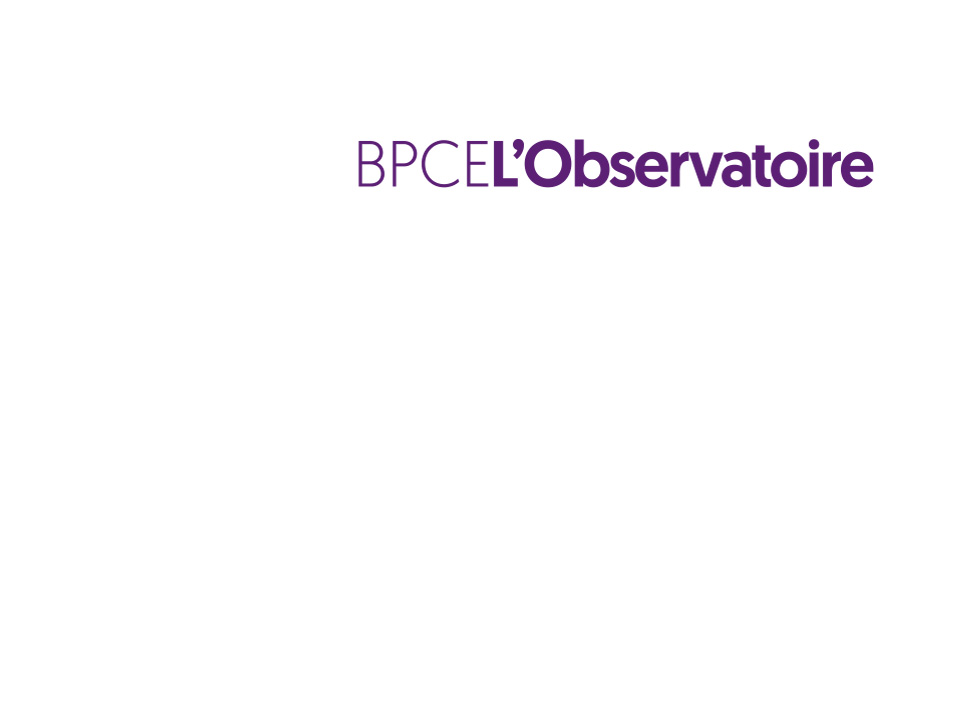

How is the ongoing budget crisis and climate of uncertainty influencing French people’s investment decisions?
[October 2025] The BPCE economists José Bardaji, Eric Buffandeau, and Marion Stephan analyze changes in French people’s savings behavior over the first eight months of the year. They also provide us with an overview of French financial assets and identify three key developments over the same period.


A new landscape for financial investments
At the end of 2024, French households’ financial assets came to a total of €6,926bn, equivalent to 3.7 years of income. These assets can be broadly divided into three main, roughly equivalent categories – namely, bank deposits (29%), securities (30%) and insurance (32%) – and are made up of three components:
- Financial savings, corresponding to unspent income. Since 2021, this has stood at an average of 7.8% of income, a real driver of investment over this period;
- Debt: after strong growth over the period 1995-2020 (rising from 55% to 104% of income), this component declined as a result of higher interest rates (to stand at 93% at the end of June 2025);
- Revaluations: above and beyond new payments into investment accounts, revaluations contribute directly to the growth of financial wealth, irrespective of whether these revaluations are driven by bonds or equities.
€6,926bn The financial assets held by French households at the end of 2024.
With regard to payments into investment accounts (i.e. the first two components mentioned above), the situation of household savings since the beginning of 2025 can be characterized by three salient facts reflecting a change in the destination of financial investments.
- Firstly, we note an upward trend in financial investments (excluding securities and interest). This increase is driven, in part, by the household savings rate, a metric that rose to a 45-year high (excluding the COVID period) of 18.9% in the 2nd quarter of 2025. According to the results of the latest monthly household economic survey published by France’s national statistics institute, INSEE (September 2025), the opportunity to save remains at historic levels against a backdrop of strengthening savings capacity. One explanation for this situation could be French people’s paradoxical attitude regarding price trends and unemployment. This concern is ‘paradoxical’ because inflation remains low (1.2% in September) while growth in unemployment is under control (the rate remains low, standing at 7.5% in the 2nd quarter of the year). This could explain the rise in financial investments, further boosted by the stop in household debt reduction noted since the beginning of this year.
- Next, with regard to investment holdings, 2025 saw a return to more typical behavior in investment portfolio adjustments. The decline in inflation followed by the cut in interest rates decided by the European Central Bank (ECB) led to a reduction in regulated rates and the yields generated by term accounts. As a result, we note a significant decrease in adjustments between financial investments and a return to more normal patterns of behavior.
- Finally, there has been a significant change in the structure of investments as far as financial flows are concerned. If observed changes in surpluses (the difference between deposits and withdrawals for each investment vehicle between January and July) are compared with the previous trend (excluding the impact of lower rates of interest paid on Livret A passbook savings accounts), it appears that the reduction in regulated rates adopted on February 1st, 2025 not only penalized Livret A accounts (−€8 billion) but also term accounts (−€12 billion) in favor of life insurance (+€10 billion) and sight deposits (+€14 billion).
18.9% Household savings rate at a 45-year high (Q2-2025 and excluding the COVID period).
The new landscape for financial investments therefore seems likely to remain unchanged for some time. Aggregate inflows from January to August 2025 (excluding securities) are much higher than previously: +€44.2 billion in 2025 after +€31.9 billion in 2024 but lower than the 2018-2019 average (+€64.3 billion). This growth is chiefly driven by life insurance (+€35.3 billion, including +€29.6 billion in unit-linked products)..
Driven by the reduction in regulated rates, the contribution made by regulated passbook savings accounts – i.e. Livret A, Livret de Développement Durable et Solidaire (LDDS) and Livret d’Épargne Populaire (LEP) – is considerably lower than before (+€5.4 billion). Term accounts declined considerably (-€6.5 billion) while sight deposits (+€17.0 billion) and, to a lesser extent, Livret B passbook savings accounts (+€11.8 billion) enjoyed a rebound. Home savings continued to decline (−€17.8 billion), penalized since 2018 by their taxable status and the low returns on home savings plans (PELs).
Landing in 2025: more of the same or back to the future?
In 2025, we continue to witness a shift in financial investments, a trend already reported in the previous Rendezvous for Savings & Investments (April 2025). This new trend favors life insurance and sight deposits at the expense of term accounts and, to a lesser extent, regulated passbook savings accounts. This shift in focus is chiefly related to the steepening of the yield curve where medium- to long-term savings now offer higher returns than short-term savings
In fact, allocation decisions about investment flows and holdings have largely been influenced by the impact of cuts in regulated rates. A significant part of the difference in trajectories between the last seven months of 2024 and the first seven months of 2025 can therefore be explained by the reduction, on February 1st, in the rates for the Livret A passbook savings account (cut from 3.0% to 2.4%) and the LEP savings account (from 4.0% to 3.5%). Econometric modeling makes it possible to quantify the effects of these cuts, a result mirrored in how the French have changed their investment behavior! Seven out of ten Livret A account holders say that the reduction in the Livret A rate to 1.7% on August 1, 2025 could lead to a decrease in deposits or even the withdrawal of savings from these accounts.
At the same time, investors’ appetite for life insurance has never been higher, with the image of this investment solution improving in all respects over the last six months, particularly in terms of long-term interest (+14 points), reliability/security (+8 points), and trust (+7 points). When it comes to term accounts, 11% of French people say they had one of these accounts that matured during the first half of the year. The main investment vehicle used for this purpose is the Livret A passbook savings account (35%), ahead of life insurance (14% in euros and 8% in units of account), followed by other tax-free passbook savings accounts (20%), current accounts (19%) and home savings accounts (18%). Managers and middle-level professionals tend to favor less liquid investments (such as life insurance).
Between now and the end of 2025 we are likely to see the same phenomenon of large-scale allocation adjustments between financial investments. Furthermore, the impact caused by the rate of interest earned on Livret A savings accounts is much greater when the rate falls than when it rises, especially below the psychological threshold of 2%, which probably reflects the central banks’ target inflation level.
€46bn Estimated net amount of household financial investments in 2025 (deposits – withdrawals).
Overall, despite the downturn in French purchasing power (+0.8% in 2025, after +2.5% in 2024 according to INSEE), household financial investments are expected to increase by €46 billion (after rising by €36 billion in 2024). The structure of new deposits is also expected to change significantly with a surge in life insurance, amounting to €50 billion, including €10 billion in euro-denominated funds, a sharp rebound in sight deposits and passbook savings accounts, and a decline in term deposits.
Uncertainty and budget crisis: what impact?
Unsurprisingly, the French’s main financial concerns are retirement and inheritance/transfer of assets. They have very little appetite for risk (only 6% are willing to invest in more risky assets) and favor liquidity (61% prefer investments that are fully available despite offering lower returns).
In the current context, three out of four French people are concerned about France’s political and budgetary situation. This level of concern has been increasing over time, particularly since the beginning of this year. It also increases with the age of the population, affecting 9 out of 10 French people aged 65 and over. This concern is reflected in the financial situation of nearly half of the French population, particularly artisans and business owners, but also executives and intermediate professions.
Nine out of ten French people aged 65 or more are worried about the current budgetary and political situation.
The impact of this political and budgetary uncertainty on French savings has been modeled by economists at BPCE. Using an annual econometric equation estimated over the period 1980-2023, they found that the savings rate depends not only on increases in purchasing power (+), inflation (+), and the difference between the 10-year OAT and the Livret A passbook savings account rate (−), but also positively on France’s annual public deficit (+) *.
This last variable may simulate a form of the Ricardo-Barro effect: when households anticipate the likelihood of future tax increases in the event of an exacerbation in the public deficit, the wealthiest tend to increase their savings to prepare for this drift. According to this model, an additional 1 pp increase in the public deficit is expected to raise the savings rate by 0.32 percentage points in the first year and by 0.55 percentage points after three years. The drift in the public deficit over the past two years should therefore lead to a 1.2 pp increase in the savings rate in 2025.
However, it seems that the model has underestimated the level of this savings rate by more than two points in 2025. There are three possible explanations for this: the first corresponds to possible non-linear effects liable to exacerbate the previous effect; the second attributes part of this underestimation of the 2025 savings rate to the current political uncertainty; the third stems from a more significant impact on the savings behavior of French people aged 65 or more.
In addition to this effect on savings rates, the political and budgetary crisis is also influencing French investors’ asset allocation decisions with a shift towards less risky investments. Two examples of this are PEA (equity savings plans) and life insurance. The outstanding amount of PEA savings plans stood at €119 billion at the end of June 2025, virtually unchanged from the previous peak in 2006, while over the same period the SBF250 index rose by 45%. However, this political and budgetary crisis is having an impact on the stock market in France. Since June 7, 2024, the CAC40 has fallen by 4% over a 15-month period while the DAX has risen by 27%, the MIB by 20% and the Dow Jones by 17%.
When it comes to life insurance, the French people’s ‘preferred’ investment vehicle has shifted towards a more balanced mix of euro funds and unit-linked funds over the past decade owing to the strong performance of the stock markets, the success of PERs (retirement savings plans), a low interest rate environment, along with an offering that promotes unit-linked funds more strongly.
This shift has lost steam over the past year. After reaching an all-time high of 40% in 2022-2023, this share fell to 38% in 2024 and has remained at this level since then. It may well decline slightly at the end of this year.
* The + sign correlates positively with the savings rate and the – sign correlates negatively with the savings rate.
For further details
-
Press conference presentation – October 2025
PDF (In French only)
Download817 Ko


